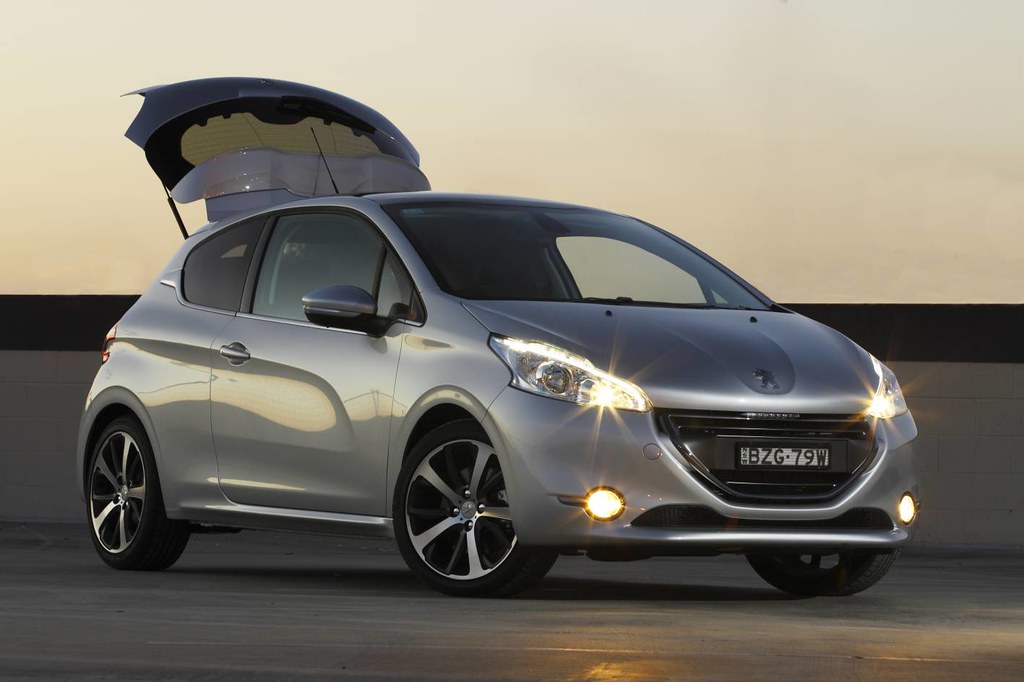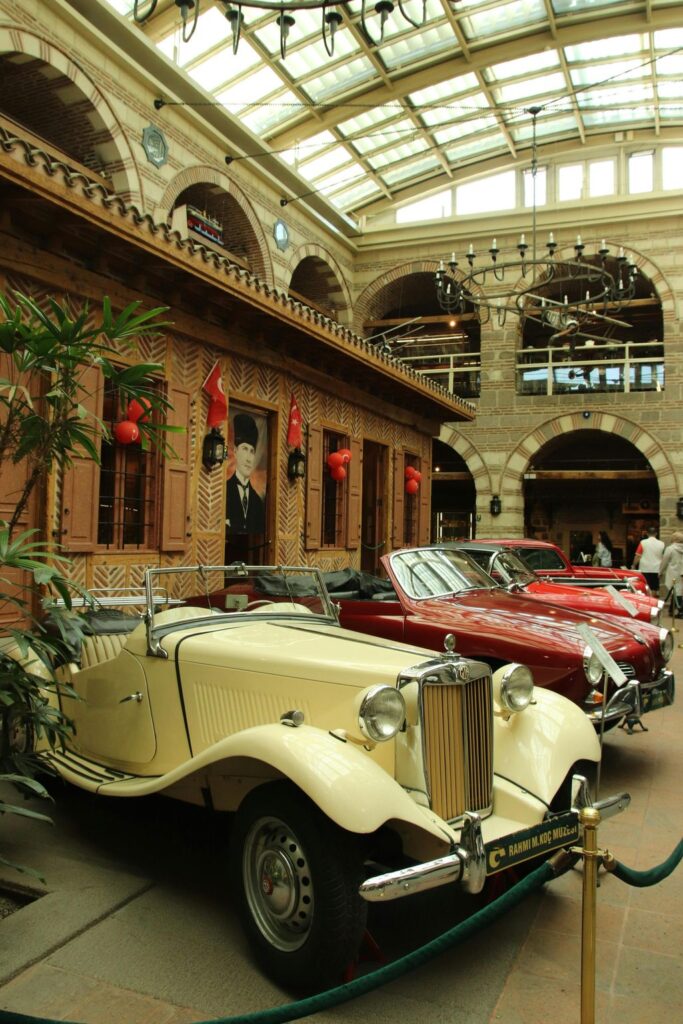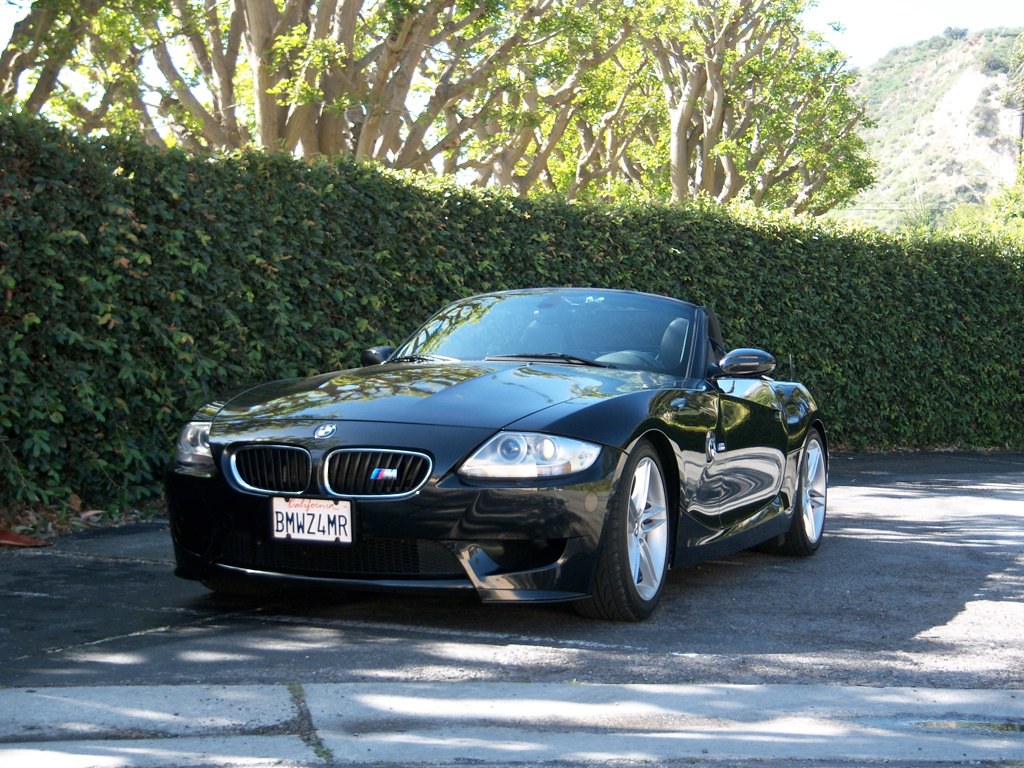
The 1960s represent a truly golden age for American automobiles, a decade where innovation, style, and raw power converged to create some of the most iconic vehicles in history. Among the pantheon of automotive giants, Chevrolet stood as a titan, consistently delivering models that captivated the public and dominated the sales charts. These cars weren’t just modes of transportation; they were statements of aspiration, freedom, and an undeniable passion for performance.
From the sleek lines of the Corvette to the robust power of the Impala, Chevrolet’s diverse lineup during this era carved a permanent niche in the hearts of enthusiasts. The brand’s commitment to combining striking aesthetics with cutting-edge engineering resulted in a parade of vehicles that were both accessible and exhilarating. This remarkable blend allowed Chevrolet to outsell all other GM lines by a significant margin, underscoring the widespread confidence and loyalty the public placed in its creations.
Decades later, many of these beloved machines have transcended their original purpose, evolving from popular consumer items into irreplaceable automotive treasures. Today, the very models that once graced driveways across America now command prices that only the truly wealthy can afford, placing them firmly in the realm of millionaires. Join us as we journey back in time to explore seven of these legendary Chevys, delving into the specific qualities that made them revolutionary then and extraordinarily valuable now.
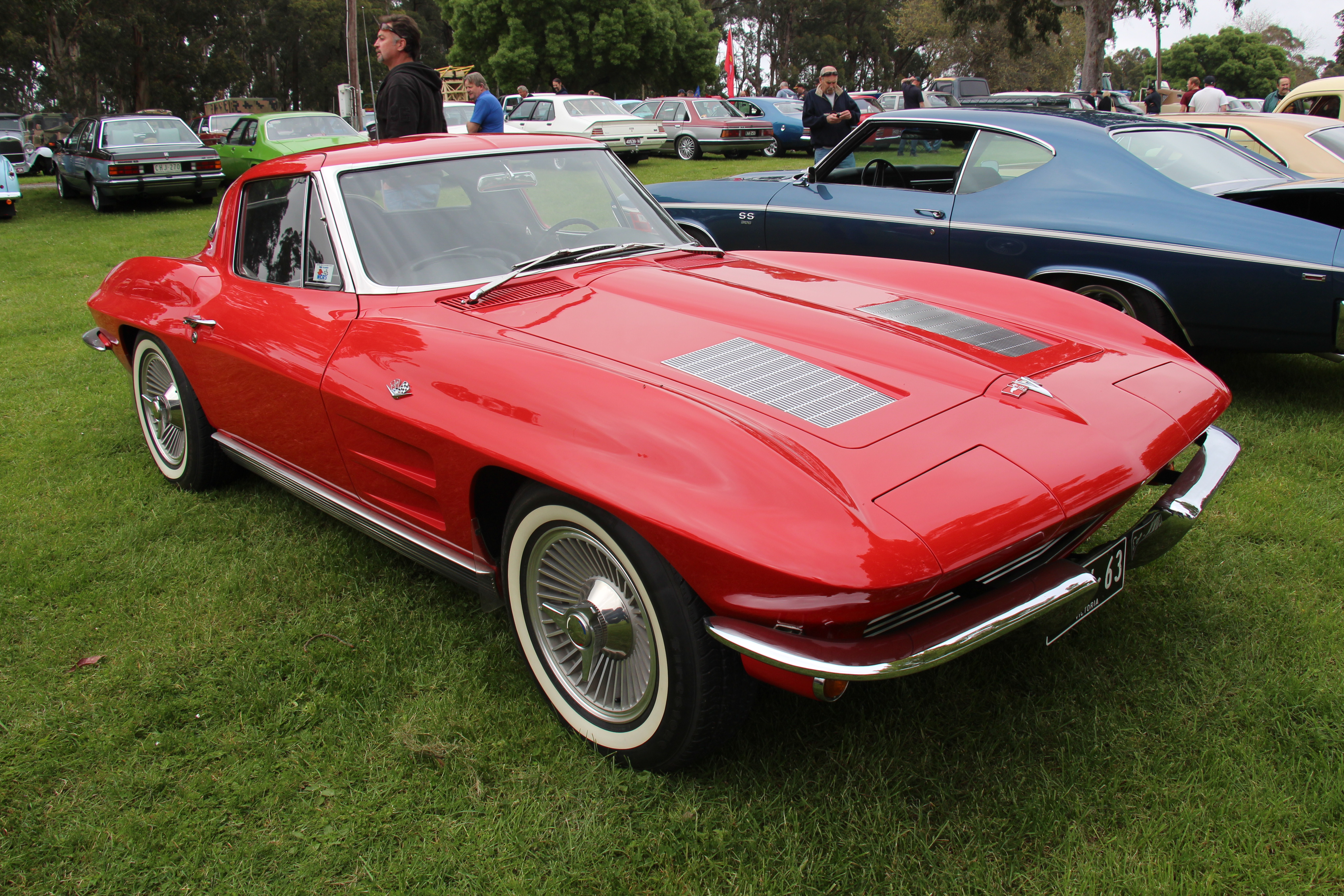
1. **1963 Chevrolet Corvette ‘Sting Ray’ (Split-Window Coupe)**The year 1963 marked a pivotal moment in the history of the Chevrolet Corvette, with the introduction of the C2 generation, famously known as the ‘Sting Ray.’ This was not merely an update; it was a complete ground-up rebirth that redefined what a sports car could be. The new Sting Ray was a masterclass in design, capturing immediate attention and setting a new benchmark for automotive aesthetics.
Every aspect of the 1963 Sting Ray was crafted to excite and perform. It was notably four inches shorter and a little lighter than its predecessor, contributing to a more agile and dynamic driving experience. The car’s sleek profile was accentuated by innovative features such as hidden headlights, which added to its futuristic and undeniably stylish appeal. These design choices collectively presented a vehicle that felt fresh, bold, and utterly desirable.
However, it was a particular design element that truly cemented the 1963 coupe’s legendary status: the split rear window. This distinctive feature, comprised of two panes separated by a central spine, was unlike anything buyers had ever seen, instantly becoming a topic of fascination and admiration. While it was claimed to be a visibility restriction, leading to its removal after just one season, its brief production run has made it immensely coveted by collectors today, who cherish its unique and iconic presence.
Its radical design and engineering prowess led to a phenomenal increase in sales, with figures rising a whopping 50%. Originally priced at $4,035.00 for the convertible and $4,250.00 for the coupe, this groundbreaking Corvette was a triumph of American automotive ingenuity. Today, the 1963 Split-Window Coupe stands as one of the most celebrated and highly valued classics, a testament to its enduring impact on both design and performance history.
Car Model Information: 2025 Chevrolet Corvette Stingray w/3LT
Name: Chevrolet Corvette
Caption: 2021 Chevrolet Corvette C8
Manufacturer: Chevrolet
Production: 1953–present
ModelYears: bulleted list
Assembly: bulleted list
Class: Sports car
BodyStyle: coupé
Layout: Front-engine, rear-wheel-drive layout,Rear mid-engine, rear-wheel-drive layout
Categories: 1950s cars, 1960s cars, 1970s cars, 1980s cars, 1990s cars
Summary: The Chevrolet Corvette is a line of American two-door, two-seater sports cars manufactured and marketed by General Motors under the Chevrolet marque since 1953. Throughout eight generations, indicated sequentially as C1 to C8, the Corvette is noted for its performance, distinctive styling, lightweight fiberglass or composite bodywork, and competitive pricing. The Corvette has had domestic mass-produced two-seater competitors fielded by American Motors, Ford, and Chrysler; it is the only one continuously produced by a United States auto manufacturer. It serves as Chevrolet’s halo car.
In 1953, GM executives accepted a suggestion by Myron Scott, then the assistant director of the Public Relations department, to name the company’s new sports car after the corvette, a small, maneuverable warship. Initially, a relatively modest, lightweight 6‑cylinder convertible, subsequent introductions of V8 engines, competitive chassis innovations, and rear mid-engined layout have gradually moved the Corvette upmarket into the supercar class. In 1963, the second generation was introduced in coupe and convertible styles. The first three Corvette generations (1953–1982) employed body-on-frame construction, and since the C4 generation, introduced in 1983 as an early 1984 model, Corvettes have used GM’s unibody Y‑body platform. All Corvettes used front mid-engine configuration for seven generations, through 2019, and transitioned to a rear mid-engined layout with the C8 generation.
Initially manufactured in Flint, Michigan, and St. Louis, Missouri, the Corvette has been produced in Bowling Green, Kentucky, since 1981, which is also the location of the National Corvette Museum. The Corvette has become widely known as “America’s Sports Car.” Automotive News wrote that after being featured in the early 1960s television show Route 66, “the Corvette became synonymous with freedom and adventure,” ultimately becoming both “the most successful concept car in history and the most popular sports car in history.”
Get more information about: Chevrolet Corvette
Buying a high-performing used car >>>
Brand: Chevrolet Model: Corvette
Price: $85,990 Mileage: 3,779 mi.
Read more about: Automotive Echoes: The Coolest Cars That Burned Bright For Just One Year

2. **1963 Chevrolet Impala SS 409**While the Corvette dominated the sports car segment, Chevrolet also made powerful statements in the full-size arena, and the 1963 Chevrolet Impala SS 409 stands as a towering testament to early muscle car prowess. This was a vehicle that seamlessly blended the spaciousness and comfort expected of a full-size sedan with an aggressive, performance-oriented heart. It was a car that offered the best of both worlds, appealing to families and performance enthusiasts alike.
At the core of this beast was the mighty 409 cubic inch (6.7 L) V8 engine. This powerhouse could churn out an impressive 425 horsepower when equipped with dual four-barrel carburetors, instantly making it a formidable contender on the drag strip. The sheer force and distinctive roar of the 409 engine became synonymous with raw American power, establishing the Impala SS as a true icon of the burgeoning muscle car era.
The Impala SS 409 was not just about brute force; it also featured stylish looks that perfectly complemented its performance capabilities. Its sleek lines and distinctive SS badging gave it an unmistakable presence, signaling to all that this was an Impala with an extra edge. It embodied the era’s appreciation for both elegance and exhilaration, making it a favorite among those who desired a performance car without sacrificing comfort.
This model played a significant role in popularizing the phrase “409,” a testament to its cultural impact, immortalized in the Beach Boys’ hit song of the same name. The 1963 Impala SS 409 thus became more than just a car; it was a cultural phenomenon, a symbol of American automotive might and musical inspiration that continues to resonate with collectors and enthusiasts worldwide, solidifying its place as a priceless classic.
Car Model Information: 2023 Jeep Wrangler Sahara
Name: Chevrolet Impala
Caption: Fourth-generation model (1967)
Manufacturer: Chevrolet
Production: 1957–1985,1994–1996,1999–2020
ModelYears: 1958–1985,1994–1996,2000–2020
Predecessor: Chevrolet Bel Air,Chevrolet Lumina#Second generation (1995–2001)
Successor: Chevrolet SS,Chevrolet Caprice
Platform: GM B platform,GM W platform,GM W platform (GMX211) (2005–2013),GM Epsilon platform#Epsilon II
Class: Full-size car,Mid-size car
Layout: Front-engine, rear-wheel-drive layout,Front-engine, front-wheel-drive layout
Categories: 1960s cars, 1970s cars, 1980s cars, 1990s cars, 2000s cars
Summary: The Chevrolet Impala () is a full-size car that was built by Chevrolet for model years 1958 to 1985, 1994 to 1996, and 2000 to 2020. The Impala was Chevrolet’s popular flagship passenger car and was among the better-selling American-made automobiles in the United States.
For its debut in 1958, the Impala was distinguished from other models by its symmetrical triple taillights. The Chevrolet Caprice was introduced as a top-line Impala Sport Sedan for model year 1965, later becoming a separate series positioned above the Impala in 1966, which, in turn, remained above the Chevrolet Bel Air and the Chevrolet Biscayne. The Impala continued as Chevrolet’s most popular full-sized model through the mid-1980s. Between 1994 and 1996, the Impala was revised as a 5.7-liter V8–powered version of the Chevrolet Caprice Classic sedan.
In 2000, the Impala was reintroduced again as a mainstream front-wheel drive car. In February 2014, the 2014 Impala ranked No. 1 among Affordable Large Cars in U.S. News & World Report’s rankings. When the 10th generation of the Impala was introduced for the 2014 model year, the 9th generation was rebadged as the Impala Limited and sold only to fleet customers through 2016. During that time, both versions were sold in the United States and Canada. The 10th-generation Impala was also sold in the Middle East and South Korea.
Get more information about: Chevrolet Impala
Buying a high-performing used car >>>
Brand: Chevrolet Model: Impala SS 409
Price: $31,077 Mileage: 41,012 mi.
Read more about: The Road to Riches: 15 Classic Cars Skyrocketing in Value for Savvy Enthusiasts

3. **1965 Chevrolet Chevelle Malibu SS 396**As the mid-1960s arrived, the automotive landscape was rapidly evolving, with a growing demand for mid-sized cars that could deliver serious performance. Chevrolet stepped up to this challenge, introducing the Chevelle to compete fiercely with models like Ford’s Fairlane. However, it was the specific introduction of the Chevelle Malibu SS 396 in the middle of the 1965 model year that truly changed the game, marking Chevrolet’s emphatic entry into the burgeoning muscle car segment against rivals like the GTO.
This significant leap saw the Chevelle Malibu SS 396 quickly gain popularity, largely due to its potent new engine and aggressively styled appearance. It was designed to capture the hearts of enthusiasts seeking a powerful, yet more manageable, performance machine. The car’s aesthetics were sharp and purposeful, communicating its performance intentions clearly without being overly ostentatious.
The real turning point for the Chevelle, and indeed for Chevrolet’s mid-size muscle car offerings, was the debut of the 396 cubic inch (6.5 L) V8 engine. This was a monumental addition, as it marked the first time a big block engine was offered in a Chevelle. This monumental engine offered a potent mix of power and performance, providing the muscle required to compete at the highest level.
Comparatively, the Chevelle Malibu SS 396 offered impressive performance for the era, even having a slight edge in horsepower and acceleration times against some of its contemporaries. This competitive advantage, combined with its attractive styling and the newfound power of the 396 engine, cemented the Chevelle’s place in muscle car history. It became an instant hit, showcasing that Chevrolet truly could do no wrong in the eyes of the buying public, delivering model after successful model.
Car Model Information: 2023 Jeep Wrangler Sahara
Name: Chevrolet Chevelle
Caption: 1970 Chevrolet Chevelle SS 396 Sport Coupe
Manufacturer: Chevrolet
Production: 1963–1977
ModelYears: 1964–1977
Class: Mid-size
Platform: GM A platform (RWD)
Layout: FR layout
Successor: Chevrolet Malibu
Categories: 1970s cars, All articles needing additional references, All articles that may contain original research, All articles with specifically marked weasel-worded phrases, All articles with unsourced statements
Summary: The Chevrolet Chevelle is a mid-sized automobile that was produced by the Chevrolet division of General Motors (GM) in three generations for the 1964 to 1977 model years. Part of the GM A-body platform, the Chevelle was one of Chevrolet’s most successful nameplates. Body styles included coupes, sedans, convertibles, and station wagons. The “Super Sport” versions were produced through the 1973 model year and Lagunas from 1973 through to 1976.
After a four-year absence, the El Camino was reintroduced as part of the new Chevelle lineup in 1964.
From 1964 to 1969, GM of Canada sold a modified version of the Chevelle that included a Pontiac-style grille, and a LeMans instrument panel, marketed as the Beaumont.
The Malibu was the top-of-the-line model to 1972, and completely replaced the Chevelle nameplate starting with the redesigned, and downsized 1978 model year.
Get more information about: Chevrolet Chevelle
Buying a high-performing used car >>>
Brand: Chevrolet Model: Chevelle Malibu SS 396
Price: $31,077 Mileage: 41,012 mi.
Read more about: The Road to Riches: 15 Classic Cars Skyrocketing in Value for Savvy Enthusiasts
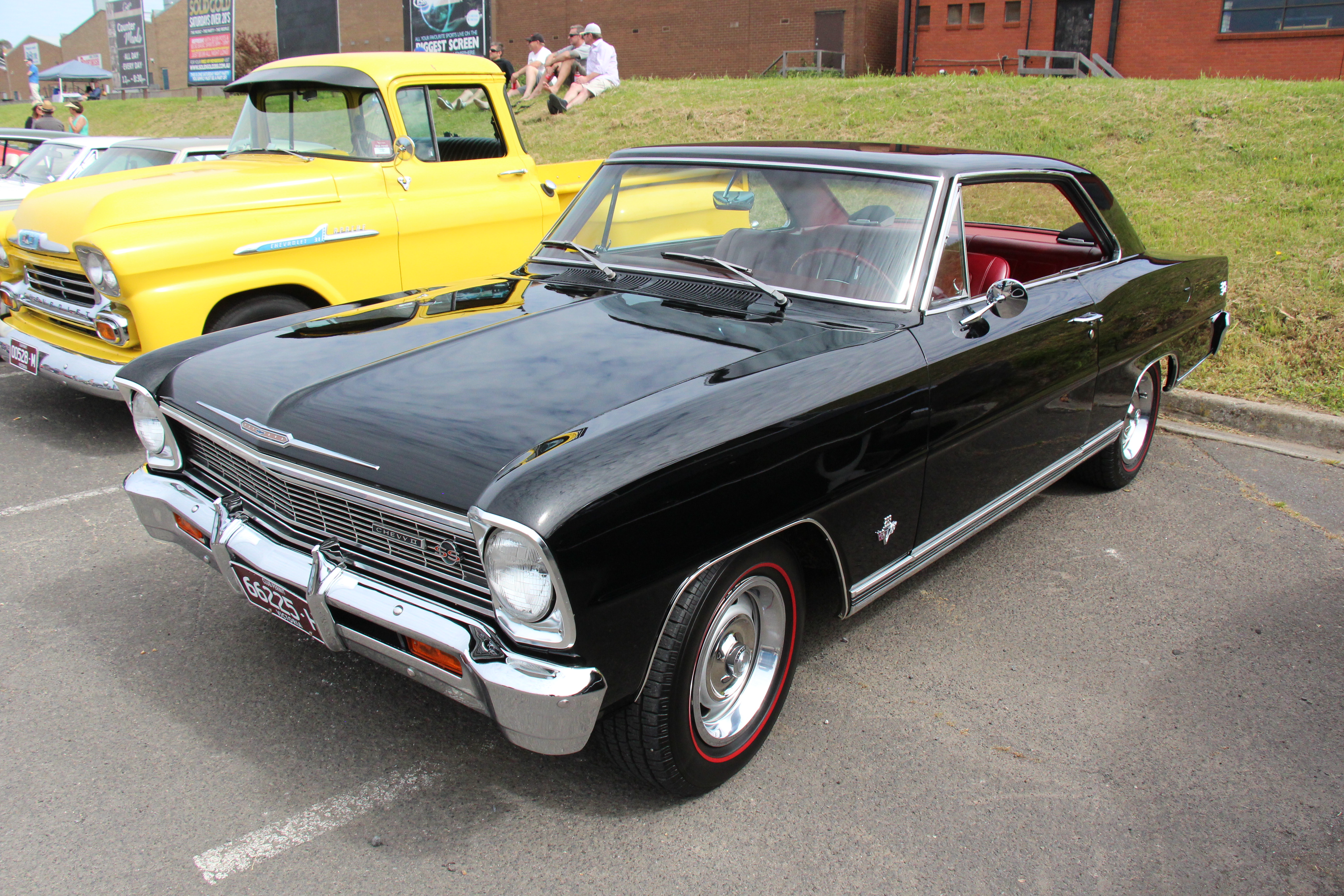
4. **1966 Chevrolet Nova SS**The 1966 Chevrolet Nova SS demonstrated that serious performance didn’t always require a sprawling chassis or a massive footprint. While it might have been smaller in size compared to some of the other high-performance vehicles of its era, the Nova SS packed a serious punch, transforming a compact car into an unexpected drag strip dominator. This model quickly earned a reputation for its deceptive speed and agility.
Central to the Nova SS’s formidable capabilities was the potent L79 engine option. This particular powerplant, a high-compression 327 cubic inch small block V8, was capable of producing a robust 350 horsepower. What truly set this apart was its pairing with a car weighing in at around 3000 lbs., creating an incredibly favorable power-to-weight ratio that translated directly into blistering acceleration and impressive quarter-mile times.
The L79 engine, which the Nova SS shared with acclaimed models like the Corvette and Chevelle, highlighted Chevrolet’s intelligent engineering, making top-tier performance accessible in a more compact package. This strategic engine allocation solidified the Nova SS’s position as a serious contender, proving that big power could indeed come in smaller, more agile packages.
Consequently, the 1966 Chevrolet Nova SS achieved considerable success in the world of drag racing. It became a formidable competitor, particularly popular in the NHRA Stock and Super Stock classes, where it often dominated its segment. Its ability to consistently outperform expectations on the strip, coupled with its distinct styling, has ensured its legacy as a highly valued classic. It remains a coveted prize for collectors who appreciate both its racing heritage and its remarkable engineering for its size.
Continuing our journey through Chevrolet’s illustrious 1960s lineup, we now delve deeper into the realm of pure performance, race-bred machines, and unparalleled exclusivity. This section shines a spotlight on three more automotive legends that solidified Chevrolet’s reputation for producing not just popular cars, but uncompromising performance vehicles designed for speed and dominance. These aren’t just cars; they are coveted pieces of American history, defined by their audacious engineering, racing pedigrees, and a desirability that now places them far beyond the reach of all but the most affluent collectors. The roaring engines, the sleek lines, and the incredible stories behind these machines truly encapsulate the spirit of a golden era.
Car Model Information: 2023 Jeep Wrangler Sahara
Caption: 1963 Chevrolet Chevy II 300 4-door sedan
Name: Chevrolet Chevy II / Nova
Manufacturer: unbulleted list
ModelYears: unbulleted list
Production: unbulleted list
Class: unbulleted list
Successor: unbulleted list
Categories: 1970s cars, 1980s cars, All articles needing additional references, Articles needing additional references from March 2025, Articles with short description
Summary: The Chevrolet Chevy II/Nova is a small automobile manufactured by Chevrolet, and produced in five generations for the 1962 through 1979, and 1985 through 1988 model years. Built on the X-body platform, the Nova was the top selling model in the Chevy II lineup through 1968. The Chevy II nameplate was dropped after 1968, with Nova becoming the nameplate for all of the 1969 through 1979 models. It was replaced by the 1980 Chevrolet Citation introduced in the spring of 1979. The Nova nameplate returned in 1985, produced through 1988 as a S-car based, NUMMI manufactured, subcompact based on the front wheel drive, Japan home-based Toyota Sprinter.
Get more information about: Chevrolet Chevy II / Nova
Buying a high-performing used car >>>
Brand: Chevrolet Model: Nova SS
Price: $31,077 Mileage: 41,012 mi.
Read more about: Beyond the Blockbuster: A Deep Dive into Dwayne ‘The Rock’ Johnson’s Multi-Million Dollar Car Collection

5. **1967 Chevrolet Corvette Sting Ray L88**Stepping into the mid-1960s, Chevrolet unleashed a beast that would etch its name into racing lore: the 1967 Corvette Sting Ray L88. This was no ordinary Corvette; it was, and remains, “one of the rarest and most coveted muscle cars ever produced,” an ultimate expression of raw power crafted explicitly for the unforgiving demands of the racetrack. Its very existence was a statement from Chevrolet engineers, a clear declaration that the pursuit of speed was paramount, even if it meant limited availability and a challenging ownership experience for the uninitiated.
At the formidable heart of the L88 was a “monstrous 427 cubic inch (7.0 L) V8 engine,” an engineering marvel that, while officially underrated at 430 horsepower, was known to produce significantly more in actual race conditions. This potent powerplant was meticulously built for endurance and extreme performance, featuring heavy-duty components designed to withstand the brutal rigors of competitive racing. It required 103-octane fuel and possessed a temperament that demanded a skilled and dedicated hand, truly establishing it as a pure racer’s machine rather than a casual Sunday driver.
Chevrolet’s intent for the L88 was unambiguously competition-focused, a direct assault on the world of motorsport. Reflecting this singular purpose, “only 20 units were built, primarily aimed at serious racing teams rather than casual consumers.” This extreme exclusivity, combined with its specialized nature, meant that owning an L88 was a profound commitment to the racing lifestyle. It notably lacked many of the creature comforts found in standard Corvettes, such as air conditioning or even a radio, further cementing its status as a hardcore, purpose-built track weapon that prioritized performance above all else.
The L88’s racing credentials are nothing short of legendary, solidifying its place in the annals of American motorsport. It achieved remarkable success, including “a first-place finish in the over-5.0 L GT class and tenth overall at the 1967 12 Hours of Sebring.” This prestigious victory was just one highlight in a storied career. Beyond this singular achievement, its formidable presence saw the L88 Corvette amass “nearly 400 podium finishes and over 150 wins, including a streak of 52 consecutive victories.” This phenomenal track record speaks volumes about its engineering brilliance and the sheer dominance it exerted in its class, cementing its reputation as a revered automotive icon.
Today, the 1967 Corvette Sting Ray L88 is an irreplaceable jewel in the crown of any serious collection, often described as the holy grail of Corvettes. Its profound rarity, coupled with its unparalleled racing history and formidable, untamed performance capabilities, has propelled its value into the stratosphere, making it a dream acquisition for elite collectors. It represents the absolute pinnacle of Chevrolet’s factory-backed racing efforts in the 1960s, a testament to American muscle and engineering prowess that continues to captivate enthusiasts and command astronomical prices on the rare occasions one appears for sale, a true million-dollar machine.
Car Model Information: 2023 Jeep Wrangler Sahara
Name: Chevrolet Corvette (C2)
Caption: 1963 Chevrolet Corvette Sport Coupe
Manufacturer: Chevrolet
Aka: Chevrolet Corvette Sting Ray
Production: August 1962–July 1967
ModelYears: 1963–1967
Platform: Series 0800 (1962-1964),Series 194 (1965-1967)
Chassis: Body-on-frame
Assembly: St. Louis, Missouri
Predecessor: Chevrolet Corvette (C1)
Successor: Chevrolet Corvette (C3)
Class: Sports car
BodyStyle: Convertible (car),coupé
Layout: Front-engine, rear-wheel-drive layout
Engine: {{cvt,327,cuin,L,1,Chevrolet small-block engine (first- and second-generation)#327,V8 engine
Wheelbase: cvt
Length: cvt
Width: cvt
Height: cvt
Weight: cvt
Transmission: manual transmission,manual transmission,Powerglide
Related: Bill Thomas Cheetah
Designer: Larry Shinoda
Categories: 1960s cars, All articles needing additional references, All articles with specifically marked weasel-worded phrases, All articles with unsourced statements, Articles needing additional references from July 2024
Summary: The Chevrolet Corvette (C2) is the second-generation Corvette sports car, produced by the Chevrolet division of General Motors (GM) for the 1963 through 1967 model years.
Get more information about: Chevrolet Corvette (C2)
Buying a high-performing used car >>>
Brand: Chevrolet Model: Corvette Sting Ray
Price: $31,077 Mileage: 41,012 mi.
Read more about: Buckle Up, Boomers! 12 Legendary Rides from Your Youth That Are STILL a Total Blast to Drive
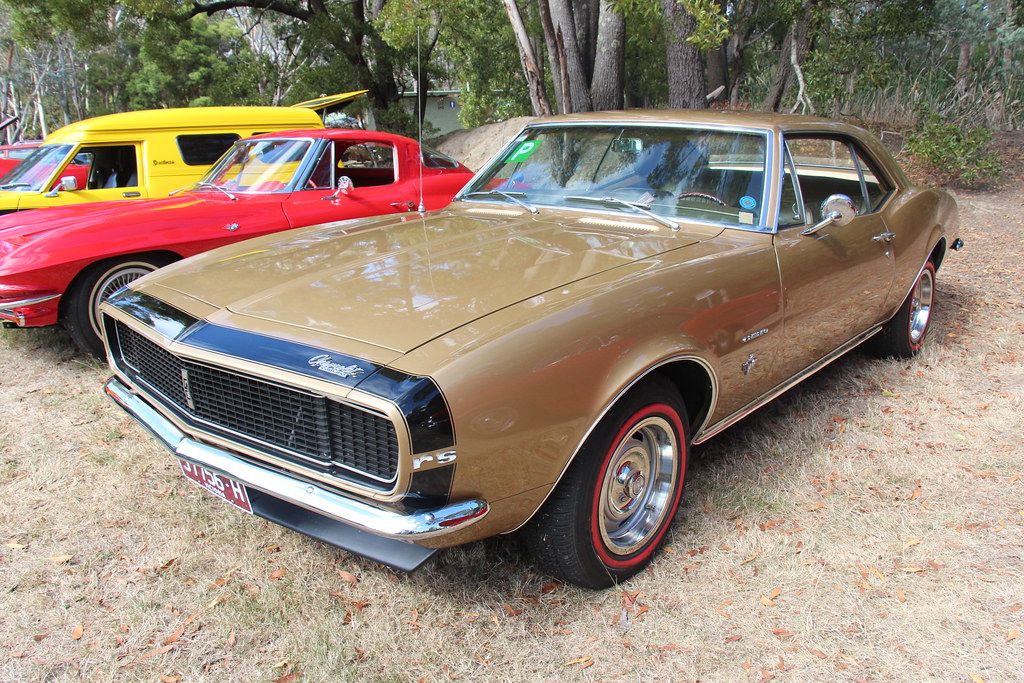
6. **1967 Chevrolet Camaro Z28**As the muscle car wars raged fiercely in the late 1960s, Chevrolet responded to the surging popularity of Ford’s Mustang with its own contender, the Camaro. However, for those seeking a truly track-ready machine, the “Z/28 variant quickly set itself apart,” not merely as a competitor, but as a purpose-built racing homologation special designed for the SCCA Trans-Am series. This model was a direct challenge to the reigning champions, created to meet strict regulations and dominate the circuits, signaling Chevrolet’s serious intent in performance motorsport and delivering a potent package to enthusiasts.
Central to the Z/28’s formidable reputation was its unique and highly specialized “high-revving short stroke 302 cubic inch (5.0 L) V8 engine,” a powerplant explicitly “developed for SCCA Trans-Am racing.” This particular engine configuration was ingeniously engineered to comply with the Trans-Am series’ 305 cubic inch displacement limit, allowing it to rev to astonishingly high RPMs for sustained periods without losing power. This strategic engine choice, paired with an expertly tuned chassis, transformed the Camaro into a potent contender, built for agility, explosive acceleration, and precise handling on the road course.
The Z/28’s impact on the racing scene was immediate and profound, a testament to its meticulous engineering. “In 1968, the Camaro dominated the series, winning ten out of the twelve races, leading Chevrolet to secure the manufacturers’ championship.” This remarkable performance wasn’t a stroke of luck; it was the direct result of a meticulously engineered package that combined brute force with sophisticated handling and an unwavering focus on competition. The Z/28 quickly became synonymous with victory, proving its mettle against the toughest competition of the era.
Its racing success was not limited to a single season, but was a consistent narrative of dominance. “Following up in 1969, the Camaro Z/28, driven by Mark Donohue for Penske Racing, continued its success, clinching the manufacturers’ championship once again.” This consistent prowess firmly established the Z/28’s legendary status, cementing its reputation as a champion on the track. Beyond the raw performance, the “Z-28 package was for the racing enthusiast,” offering distinctive features that underscored its competitive spirit and undeniable visual appeal, making it a standout on any showroom floor or race grid.
These dedicated racing enthusiasts were treated to a car that was visually distinctive and overtly performance-oriented. The Z28 featured “racing stripes, rally wheels and special red stripe tires,” elements that clearly signaled its aggressive performance intentions and set it apart from standard Camaros. It was more than just an engine; it was a holistic package of specialized components, from its heavy-duty suspension and quick-ratio steering to its responsive brakes, all working in concert to deliver an exhilarating and confidence-inspiring driving experience. Today, the 1967 Camaro Z28 is highly prized for its pure racing heritage, its undeniable track record, and its significant contributions to Chevrolet’s motorsport legacy, making it an essential and highly valuable acquisition for collectors who appreciate genuine track-bred machines.
Car Model Information: 2018 Chevrolet Camaro 1LS
Name: Chevrolet Camaro
Manufacturer: Chevrolet
Production: 1966–2002,2009–2023
ModelYears: 1967–2002,2010–2024
Class: Pony car
BodyStyle: coupe,convertible
Platform: GM F platform,GM Zeta platform,GM Alpha platform
Layout: Front-engine, rear-wheel-drive layout
Categories: 1970s cars, 1980s cars, 1990s cars, 2+2 coupés, 2000s cars
Summary: The Chevrolet Camaro is a mid-size American automobile manufactured by Chevrolet, classified as a pony car. It first went on sale on September 29, 1966, for the 1967 model year and was designed to compete with the Ford Mustang. The Camaro shared its platform and major components with the Firebird, produced by General Motors’ Pontiac division that was also introduced for the 1967 model year.
Four distinct generations of the Camaro were developed before production ended in 2002. The nameplate was revived on a concept car that evolved into the fifth-generation Camaro; production started on March 16, 2009.
Production of the sixth generation of the Camaro ended in December 2023, for the 2024 model year.
Get more information about: Chevrolet Camaro
Buying a high-performing used car >>>
Brand: Chevrolet Model: Camaro
Price: $18,785 Mileage: 69,196 mi.
Read more about: Engineer’s Nightmare: 14 Classic Models That Define Automotive Repair Challenges in 2025

7. **1969 Chevrolet Corvette ZL1**For the absolute pinnacle of Chevrolet’s performance audacity in the 1960s, we turn to the almost mythical 1969 Chevrolet Corvette ZL1. This machine “stands as one of the rarest and most formidable American muscle cars ever produced, with only two units officially built.” Its extreme scarcity elevates it beyond mere collector’s item status, placing it squarely in the pantheon of automotive unicorns, a car whispered about with reverence and awe among the most knowledgeable and discerning enthusiasts. This was Chevrolet’s ultimate big-block statement, designed for those who sought nothing less than unparalleled power.
The ZL1 was conceived and “intended for competitive racing,” a no-compromise creation designed to obliterate records and rivals on the track. From its inception, every design choice aimed to maximize speed and durability. Its “lightweight construction and powerful engine made it a dominant force on the track,” showcasing Chevrolet’s willingness to push the boundaries of conventional production vehicles. Every aspect of the ZL1’s construction was meticulously considered to enhance performance, from strategic weight reduction to optimizing its aerodynamic profile, ensuring it was a weaponized marvel ready for intense battle.
The true marvel of the ZL1, and the reason for its legendary status, was its revolutionary heart: an “all-aluminum 427 cubic inch (7.0 L) V8 engine.” This particular engine was a monumental leap in performance engineering, setting it apart even from its potent L88 predecessor by utilizing a lightweight aluminum block instead of traditional cast iron. This significant reduction in weight dramatically enhanced the Corvette’s power-to-weight ratio, allowing it to accelerate with astonishing ferocity and handle with an agility truly unexpected from such a powerful machine. Officially rated at 430 horsepower, this figure, much like the L88, was a famously conservative estimate, hinting at the engine’s true, unleashed potential, which was far greater.
Beyond its incredible engine, the ZL1 was built with a host of other race-grade components, ensuring that every part of the car could handle the immense power it produced. Heavy-duty suspension, specialized braking systems, and a reinforced chassis were all part of the package, creating a cohesive, high-performance platform. This dedication to engineering excellence, coupled with its radical lightweight engine, meant the ZL1 was a car without peer, a testament to what was possible when limits were truly pushed in the pursuit of speed.
The ZL1’s unparalleled rarity and the sheer, unadulterated ferocity of its all-aluminum big-block engine have enshrined it as one of the most desirable American cars ever created. Its brief, almost phantom-like existence only amplifies its mystique and allure among elite collectors, who view it as the ultimate testament to Chevrolet’s engineering prowess and audacious spirit. To own a ZL1 is not just to possess a car; it is to hold a tangible piece of automotive legend, a symbol of extreme performance, exclusivity, and an uncompromising vision that defined a brief, brilliant moment in automotive history.
Read more about: Unveiling American Automotive Excellence: A Deep Dive into Chevrolet’s 12 Most Legendary Models of All Time
These mechanical masterpieces, born from a decade of unparalleled innovation, continue to resonate deeply with automotive enthusiasts and collectors worldwide. From their groundbreaking designs to their earth-shaking engines, these Chevrolets from the 1960s are more than mere vehicles; they are rolling sculptures of power, prestige, and passion. Their limited production runs, championship-winning histories, and the sheer audacity of their engineering have transformed them from steel and rubber into priceless treasures. As we look back, it’s clear why these seven Chevys now command fortunes, becoming the exclusive domain of millionaires and revered legends in the ever-evolving narrative of automotive excellence that continues to inspire generations.

